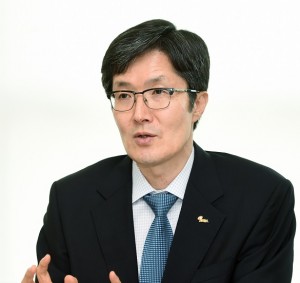POBA mulls JV launch with global pension funds for alternative investment
Jan 30, 2018 (Gmt+09:00)
LG Chem to sell water filter business to Glenwood PE for $692 million


KT&G eyes overseas M&A after rejecting activist fund's offer


Mirae Asset to be named Korea Post’s core real estate fund operator


StockX in merger talks with Naver’s online reseller Kream


Meritz backs half of ex-manager’s $210 mn hedge fund


The Public Officials Benefit Association (POBA) is considering forming project-based joint ventures with global pension funds in pursuit of high-quality alternative assets, as it is aiming to boost infrastructure and real estate debt investments this year.
In 2018, the $10 billion savings fund of South Korea’s local government employees targets a 4.8% investment return, after returning a provisional 9% last year helped by robust equity markets and an increase in subscriber contributions.

“We are seeking to change our investment direction this year for real estate and alternatives. That is, we are considering making 50:50 commitments with a global pension fund for project-based investment,” said POBA’s Chief Investment Officer Dong-hun Jang, in an annual news conference last week.
In detail, launching a joint venture with a global pension fund experienced in a specific asset class would be one option to collaborate with them. This will help verify general partners involved and improve its investment decision process, he added.
But Jang declined to specify any investment deal he was looking at in that regard.
The Korean Teachers’ Credit Union, a $25 billion retirement fund, has run project-based joint ventures with TIAA-CREF, a US pension fund for teachers, for real estate debt and property investments.
This year, POBA will continue to focus on fixed-income alternatives such as infrastructure and real estate debts in search of low-volatility portfolios.
For infrastructure investment, it will take a closer look at social overhead capital facilities and public private partnership projects mainly in developed countries.
“As for real estate investment, we are planning to increase mezzanine and debt-related assets,” Jang told reporters. “All things being equal, we will seek investments providing downside protection.”
He added that the savings fund will also seek credit-related and secondaries investments this year to mitigate the J-curve effect, or negative cash flows occurring in early years of investment, of blind-pool funds to which POBA had committed in the past two to three years.
Its AUM swelled by almost 20% to 11 trillion won ($10 billion) by end-2017 from a year earlier, and is projected to reach 12 trillion won this year.
Alternatives made up 55% of the assets, of which global portfolios account for 40%.
POBA aims to increase the proportion of global investments to 50% of alternatives over the next few years.
It recently committed around 70 billion won to a blind-pool fund of Dalmore Capital Limited, a UK-focused infrastructure investment firm, and allocated $150 million to three US private debt funds.
By Daehun Kim
daepun@hankyung.com
Yeonhee Kim edited this article
-
 Real estateMirae Asset to be named Korea Post’s core real estate fund operator
Real estateMirae Asset to be named Korea Post’s core real estate fund operatorApr 29, 2025 (Gmt+09:00)
-
 Asset managementMirae Asset bets on China as Korean investors’ US focus draws concern
Asset managementMirae Asset bets on China as Korean investors’ US focus draws concernApr 27, 2025 (Gmt+09:00)
-
 Alternative investmentsMeritz backs half of ex-manager’s $210 mn hedge fund
Alternative investmentsMeritz backs half of ex-manager’s $210 mn hedge fundApr 23, 2025 (Gmt+09:00)
-
 Real estateRitz-Carlton to return to Seoul, tapped by IGIS Asset for landmark project
Real estateRitz-Carlton to return to Seoul, tapped by IGIS Asset for landmark projectApr 22, 2025 (Gmt+09:00)
-
 Real estateS.Korean gaming giant Netmarble eyes headquarters building sale
Real estateS.Korean gaming giant Netmarble eyes headquarters building saleApr 18, 2025 (Gmt+09:00)


